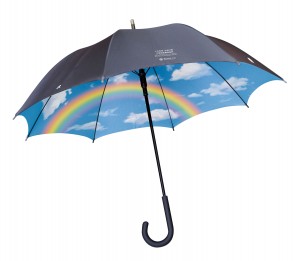March 23, 2011
 In addition to managing your own money you may be like millions of people who have to help their elderly loved ones manage their day-to-day finances as well. Because of cognitive disabilities your aging parents may not be able to keep up with paying the household bills and managing their health care. Here’s how you can help:
In addition to managing your own money you may be like millions of people who have to help their elderly loved ones manage their day-to-day finances as well. Because of cognitive disabilities your aging parents may not be able to keep up with paying the household bills and managing their health care. Here’s how you can help:
Get a Conversation Going
Your elderly parents may be embarrassed by their financial situation and their lack of control. Just because they don’t tell you about their money problems doesn’t mean everything is fine. The only way one woman found out that her mom was having financial difficulties is when she called the utilities company when her mother’s lights went out only to find out they had been terminated for lack of payment. You would have a conversation with your parents before things get bad.
Get Organized
The first step is gathering together all pertinent financial documents. Make a simple list of outstanding bills and upcoming expenses. Designate a desk drawer for all important mail and ask your parents to keep all the bills they are for your review.
Stay connected
If possible, sit down with your parents to discuss their finances on a monthly basis so that you can show them how you are organizing things for them. By having regular conversations you’ll avoid sudden surprises.
Communicate
If you’re managing finances for your parents be sure that you communicate everything that you are doing with your siblings.
Manage, But Don’t Control
You want to make sure that your parents are making their own financial decisions. The quickest way to run into resistance is to try to force your parents to do something against their will. As long as they have full control of their mental faculties you shouldn’t be trying to control their financial future. Your job is to guide and assist.
Plan For The Future
Nobody likes to talk about death, but having an up-to-date will makes sense. Explain to your folks that without a will their hard-earned money will get tied up in the courts. Do they really want their lifetime of savings wasted on lawyers fees? Set up it up while your parents are able to make decisions on their own.
Keep Your Eyes Open
Con artists target the elderly with scams that can easily wipe out their savings accounts. These crooks know that older people are sometimes lonely for companionship and are eager to trust someone who takes an interest in them. When possible, have duplicate statements of your parents accounts sent to your home so that you can look for suspicious transactions.
March 18, 2011
 Author: Emily
Author: Emily
When it comes to protecting your family against the unthinkable, you have a choice between selecting many different types of life insurance. Two of the main types include Whole Life Insurance and Term Life Insurance. An insurance agent will be happy to sell you either type. After you read this article, you will know which type is better for you and which type is better for the insurance company. Before there is any life-changing crisis and the need for life insurance presents itself, it would be smart to become as informed as possible on these two types of life insurance.
What is Term Life Insurance?
In contrast to Whole Life, Term Insurance is strictly insurance. All of the money from your premium (less the obligatory fees for administering the program) goes directly toward insurance protection. Term life can have anywhere from a 1 to 30 year term. As long as you keep the policy in force, your coverage is in effect until the term expires. For example a 10 year term life policy will pay if you die within the 10 year term. If you do not renew or make other arrangements, once the 10 years are up, you are no longer covered.
What is Whole Life Insurance?
Whole life insurance has two components to it. An insurance component and an investment component. In a whole life policy, a portion of the premium is invested, building cash value as the policy matures. You will pay considerably more for a whole life policy as compared to Term Life. Depending upon their philosophy (life insurance companies tend to be conservative) the insurance company may buy money market funds, bonds or stocks. You can borrow against the cash value that accumulates over the years. Your monthly premium remains the same throughout the life of the policy. As long as you continue to pay your premiums, the policy stays in force regardless of any changes in your health.
Whole Life insurance policies can be either non-participating or participating. The greater majority of new Whole Life policies being written today are participating policies, which simply means that they have the flexibility to use the investment earnings in a variety of ways. Earnings (dividends) can be “spent” on increasing the cash value of the policy or decreasing the monthly premiums.
People who are conservative with their money and want reassurance that they are protected for life, might consider purchasing a whole life policy.
Cost of Term Versus Whole Life
In the final analysis, choosing one type of policy over the other comes down to cost. There is little argument that Whole Life is more expensive and you can get much better coverage for the same money with Term Insurance. Up front fees with Whole Life can take 2% or 3% right off the top. Lofty commissions charged by insurance agents will set you back further. Finally, the opportunity cost of entrusting a significant portion of your premium to management (Insurance Company) that has a historically poor record of performance, can be the biggest cost of all.
Suppose your monthly premium for a Whole Life policy was $300.00 per month of which $50.00 went towards insurance and $250.00 went toward investments. That totals $3,000.00 per year of investment money. Multiply that by years of paying premiums and you’re talking about a large amount of money. Conservative investments favored by insurance companies migh give you an average return of 2% -3%. You, the owner of the policy, have no control over how the money is invested.
If however, you were to invest that stash of money through a financial institution that is designed to maximize returns, and they perform with the market averages, you’d likely earn at least 7%-8%, over the extended period of time until the Whole Life policy was paid up. That can translate in to thousands if not tens of thousands of dollars of earnings lost by holding on to a Whole Life policy.
The amount of coverage one can get with Term Life versus Whole life, is dramatic. For around $50.00 per month or less, a healthy individual around 40 can get a million dollars of protection. For that same $50.00 per month, you would be lucky to get $100,000 of insurance protection.
The reason behind the huge discrepancy has been touched on before. Term life is insurance. Life insurance companies, using all sorts of statistics and actuarial tables, assign a risk for each individual in calculating
insurance rates. With Whole Life, an undisclosed portion of your total premium goes toward the investments made by the insurer. Management fees and who knows what else, is diverted away from the insurance aspect of the policy, resulting in less insurance coverage for greatly higher premiums.
When to Consider Term Life Insurance
Anytime you are looking for pure insurance, you will get more for your money by buying term insurance. If you have young children and want to protect them while they are still under your care and control, you might consider taking out a Term Life insurance policy. A 20 year, level premium Term policy will provide protection until they graduate from college and set out on their own.
Buying insurance for a focused purpose makes sense. Buying insurance with the goal of saving for your future (Whole Insurance) does not. If you want to invest for your future, set up an IRA and invest your money in diverse, quality mutual funds. If you want a little more aggressive approach you can buy or sell stocks, invest in gold or any number of available financial products. The point here being you have ownership and control of your investments.
When to Consider Buying Whole Life Insurance
When health or age reasons make it impossible to buy Term insurance, you can consider buying Whole Life. If you have an imminent need for coverage for what was an unforeseen development, you may benefit by having some coverage, albeit at a high premium.
Shop Around When Buying Term Life
Competition by all the major insurers to sell you a term life policy has caused a great deal of discrepancy in the price you may pay for Term Life. Going online, you might find the exact coverage priced in a range that differs by several hundred dollars.
To be sure, there is a need for life insurance. Planning ahead, you can put in place a policy that will insure your family can maintain their accustomed lifestyle upon your demise. Now that you know the features of Whole Life and Term Life, you can make an intelligent decision on the right policy for you.
March 3, 2011
 Author : Sandra
Author : Sandra
Business car insurance, technically called commercial auto insurance protects a business from the cost of a car accident.
A flower shop, for instance, may have a commercial van to deliver flowers to customers. If, during the course of running a late delivery, the van runs into a car, truck, or motorcycle, the flower business may have to pay property repair costs and medical injury expenses because of the accident. Without insurance, the business will be in legal trouble for not meeting the states minimal commercial liability requirements, and by underinsuring, it will be in financial trouble. However, with the right commercial auto insurance, it will be legally and financially protected.
Different Types of Commercial Auto Insurance
A business that owns commercial vehicles, like passenger cars, delivery vans, and commercial trucks, must invest in buying commercial auto insurance. Although the state only requires minimum liability insurance, it would be advisable for the business to also consider collision insurance, comprehensive insurance, and underinsured motorist insurance.
Commercial Liability Insurance
In the United States, there is no standard commercial liability insurance requirement because this will vary from one state to another.
In Alaska, for example, the state requires:
- 50/100/25 split liability coverage.
- $50,000 bodily injury protection for each person.
- $100,000 bodily injury protection for each accident.
- $25,000 property damage protection for each accident.
By comparison, Montana is almost liberal in its requirements, only asking for a 25/50/10 split liability cover.
Advice on Meeting State Requirements
In working to meet state requirements, there are essentially 3 steps to take:
- Consult an auto insurance company selling commercial auto insurance or consult the state department insurance website.
- Over insure, rather than under insure. It costs only a little more, but it can save thousands, if not tens of thousands in expenses.
- Carry a 100/300/100 split liability cover after reviewing the net worth of personal and business assets.
Collision Coverage
Commercial vehicles are well protected with collision insurance, which covers the cost of repairs after an accident.
This coverage includes more than just a collision between two vehicles. It also includes collision with stationary objects like a wall, a road sign or a mail box.
Comprehensive Insurance
Comprehensive insurance is less specific than collision insurance, not focused on accidents alone, but covering costs associated with less tangible events that can also damage a vehicle. It covers natural causes of damage like bad weather conditions, storms, and earthquakes. It also covers intentional, man-made causes of disaster like vandalism or theft.
Commercial vehicle insurance is recommended for busy and densely populated cities and towns where there is a likelihood of theft or an act of vandalism. It is also recommended for places where storms, extreme weather conditions, or natural disasters are prevalent.
Underinsured and Uninsured Motorist Coverage
Underinsured motorist insurance and uninsured motorist insurance, as the name implies, protect a business financially when an accident involves an underinsured or uninsured driver.
If, for instance, the commercial vehicle has an accident that results in $25,000 worth of repair expenses, but the other driver is underinsured, carrying only $12,500 in property liability insurance, this leaves the business $12,500 short of what it needs for necessary repairs for their commercial vehicle. Instead of having to pay the expense out of pocket to resume business operations, the underinsured and uninsured motorist coverage will take care of the outstanding $12,500.
Insurance for Commercial Fleets
A commercial fleet is usually defined as having 25 or more vehicles, and there are three insurance options to consider:
- Submitting a cash deposit to the states department of motor vehicles.
- Obtaining self insurance. This means setting aside money to meet state minimum liability requirements for vehicle-related expenses.
- Obtaining a surety bond.
Of course, the final authority on the insurance requirements for commercial fleets rests with the states department of motor vehicles. They are the ones who can provide the most reliable information on cash deposit options, self insurance, and surety bonds. The fact is that not every state accepts these alternative forms of insurance.
How to Save Money on Insurance
Although a commercial insurance policy will increase the cost of doing business, it is a necessary expense because it meets state requirements and provides financial protection. However, there are specific strategies that a company can use to reduce costs while not compromising on coverage.
Three of the most effective cost-cutting strategies are choosing a higher deductible, choosing an alternative payment option, and choosing a personal payment provider.
Let us look at these in some detail.
Cost-Saving Strategy 1: Choosing a higher deductible.
A business must pay a deductible when it purchases a business insurance policy. A deductible is the sum that has to be paid before an insurance company will consider an accident claim. The higher the deductible chosen, the lower the premiums will be. This could mean savings on annual insurance expense if the company generally has a safe driving record. However, it also warrants that money be set aside in a special savings account to meet the deductible should the need arise. This strategy can go awry, however, if a company chooses a higher deductible than it can set aside funds to meet. This will result in a company not being able to pay for repairing a damaged vehicle after an accident.
Cost-Saving Strategy 2: Choosing an alternative payment option.
A company can save money by choosing from several payment options.
For instance, it can save money by:
- Paying the commercial insurance policy in full, thus cutting out expenses related to administration costs and interest fees.
- In addition, some insurers also offer an additional incentive for paying the commercial insurance policy in full: a discount of 10%.
- Paying with an electronic funds transfer (EFT), thus savings on administration fees. An EFT payment means the insurance payment is auto-deducted from the company’s business bank account at a predetermined date.
Cost-Saving Strategy 3: Choosing an alternative payment option.
By using the same provider, a company can earn a discounted rate for loyalty. This strategy, however, needs to be tempered by periodically checking auto insurance quotes to ensure that another insurer is not offering even better rates for the same amount of coverage. Pricing structures in the insurance industry are always in flux, and today’s bargain quote can be tomorrow’s highest cost.
Tags:
Business Car Insurance,
Car insurance
 In addition to managing your own money you may be like millions of people who have to help their elderly loved ones manage their day-to-day finances as well. Because of cognitive disabilities your aging parents may not be able to keep up with paying the household bills and managing their health care. Here’s how you can help:
In addition to managing your own money you may be like millions of people who have to help their elderly loved ones manage their day-to-day finances as well. Because of cognitive disabilities your aging parents may not be able to keep up with paying the household bills and managing their health care. Here’s how you can help:


Recent Comments